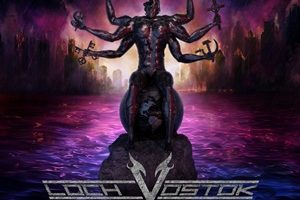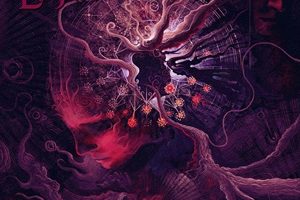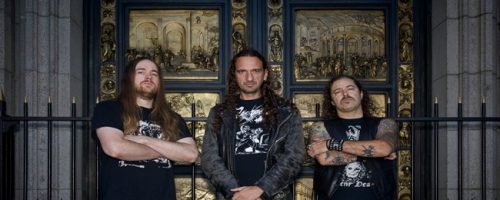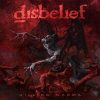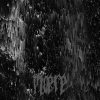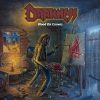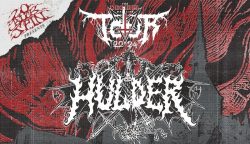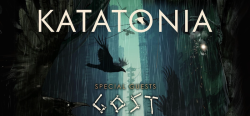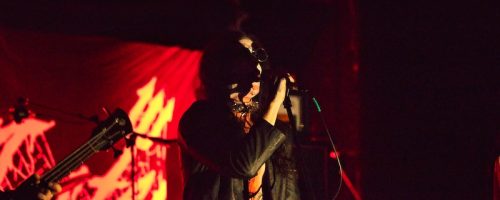Scar Symmetry – Phase II in Effect
Tuesday, 13th June 2023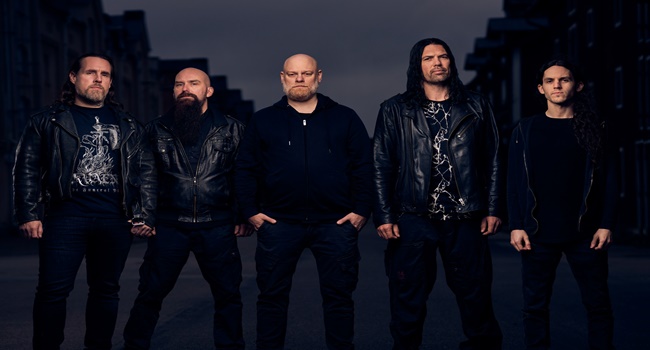
These days consumers often wait a bit longer for studio albums in the metal scene more than ever. Factors include family/personal responsibilities, longer touring windows globally – or say a prolonged multi-year pandemic. The second album in The Singularity trilogy, Phase II: Xenotaph, hits the market as a result nine years after the first in the series came out. Decidedly more death metal while still being progressive, Scar Symmetry continues to amaze the faithful while pushing parameters whenever possible. We reached out to guitarist/keyboardist Per Nilsson to catch up on why it took so long for this record to come out, plenty of talk regarding guitar work, songwriting, and lyrics, time spent with Nocturnal Rites and Meshuggah, discussion of his signature guitar model as well as what listeners can expect from the band over the next live touring/album cycles.
Dead Rhetoric: The latest album is The Singularity (Phase II: Xenotaph) – and it’s taken nine years for the follow-up to be released. What circumstances took place for this lengthy break between records (outside of the pandemic), and where do you see the similarities or differences from the first part of this series?
Per Nilsson: We wrote Phase II in 2016, and most of the recordings were actually done in 2016-17. In that way, I see these albums as coming out of the same era for me, since I wrote all of the music for the albums, they came out of the same phase of my life so to speak. These songs are old for me now. Most of the album was worked on back then. Then in 2017 I started touring with Meshuggah, and I joined the classic Swedish power metal band Nocturnal Rites. That was something that I needed at the time, almost asking for from the universe. I was burnt out from all the years in Scar Symmetry having been sort of the boss of everything, managing everything, carrying that kind of burden, the ends that needed to meet financially. I would like to just be a hired gun for some other band – and the universe provided, I got to play with those bands for a few years.
Which then put Scar Symmetry on the backburner for a bit. Every once in a while, I went back and worked on the album, just to slowly chip away at it. And then in 2019 I became a dad, by the tail end of the Meshuggah thing I had my first son. So that also changed things for me. And then obviously the pandemic happened. It’s been a long time coming, this album. But style-wise, I feel like as I’ve told you these two albums came from the same era of my life. I was a different person I suppose than I am today, so many years have passed. I am actually heading into writing mode now, as this album is coming out, my slate is clean, and I don’t have too much going on outside of touring. I feel like I’m in the right mindset to start writing again. I’m very excited to go back into writing for Scar Symmetry, it’s been such a long time. To write being the person that I am now, all these years later.
Dead Rhetoric: Do you think as a result the third part of this trilogy will be vastly different because of the seasoning and different experiences you’ve had after all these years?
Nilsson: I don’t think it will be vastly different. That almost implies stylistic change, and I don’t think that’s going to happen. It’s also kind of interesting, I’ve been getting the question quite a lot, if Phase II is inspired by my experience playing with Meshuggah. As I told you, the songs were written before I started playing with them. It’s not more influenced by Meshuggah more than anything else they’ve ever done. They became one of my favorite bands in the mid-90’s when I discovered them. Back then, especially I listened to them a lot. For sure, they are a part of the big collage of influences that make up who I am as a musician. There is a bit of Meshuggah in what I do because that what’s I grew up with so to speak.
On the previous Scar Symmetry albums, there’s not a lot of Meshuggah influence – but there are riffs that I can trace back to when I was listening to Destroy Erase Improve. That flavor that I want, I go grab it from there. Having spent all these years playing with them, I love the guys, they are a beautiful bunch of people, and it was some of the best times of my life. Coming out of it, it’s almost like an anti-influence. I don’t want to keep doing that because I’ve been so deeply involved in it, loving it, but I feel like I want to go somewhere else. It would feel weird to include so many of those influences now, because it would feel like I was carrying a photo of my ex-girlfriend in my wallet.
Dead Rhetoric: How did the cover art and color scheme come up for this record? Do you consider that initial imagery important to convey the contents of the record from a visual perspective to set the listener up for what they will experience when they press play?
Nilsson: Yeah, I think it’s really important. It can be really powerful. First, the music – for me, as the musician first and foremost, the music is the most important aspect for me. There was a time back in the day when I preferred to listen to instrumental music because I was so disconnected from the lyrics. It was all about melodies and harmonies. These days, I’m a little bit more interested in the lyrics, and I really love it when the music and the lyrics go together nicely. That can really quadruple the experience. If the music is good enough, I can endure crappy lyrics. It is really amazing when they go together. And when you also put it together with some visuals, be it video or artwork, that can be really powerful.
Even if its just still images, like the cover artwork. Something that connects with the music and the lyrics, it can really make the whole thing more multi-dimensional. Speaking of the long delay that the album has had, part of it was the first cover, we had to get a different artist. We didn’t hear from him for a long time. Eventually he came back to us and told us his mom had passed. It put him in a really dark place, which is very easy to understand and empathize with. He never came back, he couldn’t come back to work, we waited like seven months. One can argue if we waited too long, or whether we should have waited longer – but we finally realized that he’s probably never going to come back. I still have my parents and people important to me in my life. My wife lost her dad last year, I know a little bit about loss, but it’s hard to imagine. We kept waiting, hoping that he would pull through, so we found another artist. The whole thing was delayed by almost a year because of this tragedy.
We found Pierre and gave instructions that we had given to the previous artist. He started working on this, we gave him a pretty good amount of artistic freedom also. To come up with what we are dealing with in the story, which I think is appropriate. I’m really happy how it turned out. It’s sort of mirroring what we did with Phase I. We had that neo-human version of DaVinci’s Vitruvian man. In the second phase we wanted to have it in the form of the alien, this other terrestrial that we introduced in the story.
Dead Rhetoric: Do you believe Scar Symmetry has always been a band that develops strong lyrical content that makes people think and dive deep into fresh concepts – mirroring the adventurous musical ideas and layers of sounds present in these songs?
Nilsson: Yes. Henrik, our drummer who writes the lyrics, I think he’s an amazing writer. Some songs have deeper lyrics than others, some lyrics are more like stupid science fiction, others are more about bordering on new age. It’s all really meant to be entertainment, fiction. I see sometimes fans reading a lot more into it, which is kind of cool. That’s also a cool thing that people can interpret. We’ve always had very strong lyrics. To me he’s really a master of getting the vibe of the song and coming up with something that fits. Often if it’s a melodic part, the lyrical content is dealing with a little bit more of the softer subjects in the context of that song, and when the growls hit, the darker side of things. Sometimes the language can be complicated and convoluted, when he uses the bigger words, which he uses because they sound cool and there’s a certain poetry to it, sometimes it’s the only word that can be used to describe a certain thing- we reserve the more complex words for the growl parts, and the more everyday words for the clean singing.
Dead Rhetoric: When it comes to the lead guitar sections throughout the record, what’s the strategy that you employ as far as who covers what and the approach going into it? Do you try to keep things spontaneous, or are things mapped out in specific songs to achieve a certain feel/atmosphere?
Nilsson: As I wrote the album in 2016, Benjamin our second guitar player was touring with us – and only the touring guitar player. My idea was I was going to do this album as the sole guitar player. But then he joined in late 2016, we decided to invite him to join full-time. And that was before I had recorded any leads – I had written the leads. When I write the solo section, obviously I try to write stuff that I think will go well with the song according to my tastes and what excites me. I have different motives for different songs. Sometimes I just want something that just melts into the song and doesn’t have all that much extra but a bit of a pause from the vocals like in our song “The Anomaly”. Other songs I want the solo section to be very different from the rest of the song and go into some interesting territory. Sometimes I want to set things up when I write it, use some harmonic devices to modulate in between keys. So that I have something exciting to play over later when I write the solo. I always write the solos when I record them- which is later in the process.
Benjamin joined, and I needed to make space for him so he could play some solos. He plays like half as many solos as I do, I suppose, of the entire solo time. He’s one-third and I’m two-thirds, because of that. I have to give him some of my solo parts – and since I set some solo parts to be interesting to me, I kept those parts. I had to carve out more space- like in the song “Altergeist”, there’s a part in the middle of the song where things go soft, an arpeggiated chord thing underneath that I just extended at the end and let him solo on. The first part of “Chrononautilus”, that was already sung earlier in the song, I removed the short vocals on that part and added a solo which I think was for the better for the song. I think things make sense, and there are a lot of guitar solos on here, for people who are interested in that they are going to get their fill.
Dead Rhetoric: Being a part of the Nuclear Blast roster for so long, how do you believe they’ve worked with Scar Symmetry in terms of promotion, publicity, and setting a standard globally to give your music the biggest or best reach possible? As I’d imagine it hasn’t been easy handling the numerous shifts in the streaming/consumption models for the music industry these days…
Nilsson: We were lucky to get with Nuclear Blast early. When we got together as a band, we signed with a small Swedish label. We signed for a few albums as you normally do. The process for many bands is you release a few albums on a small label, then move up in the hopes of making a career. Even with bands that are pretty big today, they did their first three albums with a smaller label. We did that first album, and we got so much attention for it, rave reviews and so on that Nuclear Blast showed up, knocked on the door, asking what the situation was. They wanted to work with us, they put a bunch of money on the table for that small little label, swooped us up. Pitch Black Progress our second album was our first official album with Nuclear Blast, and they really loved the first single “The Illusionist”. Markus Stagier, the founder of Nuclear Blast, who has now founded Atomic Fire, he wrote an email in all caps. He said it was the best song he had heard in the last ten years. That was kind of a neat position to be in. They did an extraordinary amount of promotion for that album. The video for “The Illusionist”, it was played on the old version of Headbangers Ball every week for a good amount of time. That really broke us into a bigger audience pretty quickly.
And we’ve been working at it ever since. Nuclear Blast, they were bought by a big digital company a bunch of years ago called Believe Digital. Now things are different, when we released the last album, it was the old Nuclear Blast working a bit more traditionally. This was at the tail end of CD’s, and before vinyl picked up to become super big again, and streaming became what the people use most to consume music. It’s very interesting for me, how things were back in 2014 for promoting that album, it was a lot about the print media, now it’s almost no print media, it’s about influencers, and webzines, stuff like that. For Nuclear Blast, it was good to get another company involved that is so good at digital marketing. It looks pretty good, and we are doing pretty good on streaming. Amongst Swedish metal bands, our streaming numbers on Spotify we are at the 22nd place, it’s really decent.
Dead Rhetoric: Beyond your work in Scar Symmetry, you’ve also been a part of Nocturnal Rites since 2017, play with progressive rock act Kaipa, and got the chance to be a live guitarist for Meshuggah for a few years. What do you enjoy most in working in these different outfits – and how challenging is it on your part to play with a group like Meshuggah live?
Nilsson: I’m an old man, compared to some other people. I’m 49 now, and I’ve been playing guitar since I was a kid, playing in all these different kinds of situations, all kinds of styles. Even if people would only know me from playing within Scar Symmetry, there’s a lot more that I could possibly do. It’s relatively easy for me to adapt to different musical situations. Nocturnal Rites for me, it’s not that different from Scar Symmetry for me in how I approach and how I play it. It’s a melodic metal, power metal band. You strip away all the death metal, and it’s not that big of a difference.
With Meshuggah, that might strike people as being more different, and it is – but what they do is so specific. The whole formula behind 96% of their riffs, the odd meter cycle that they repeat over a 4/4 rhythm. When they reach 8 or 16 or 32 bars, they just truncate the end of that odd meter thing and move onto the next riff. That’s basically how all of their songs are constructed – which is kind of crazy. Explaining it like that, it seems like it’s easy – but they use this formula to construct these very different sounding riffs. I’ve been doing so much of that stuff myself, playing in similar types of things. I used to have a Frank Zappa tribute band where we did very crazy music, crazy rhythms. I feel like I’ve always had one leg in that world anyways. It wasn’t very difficult to get into that music. It was easy enough to learn the songs – playing stuff that rhythmically involved it demands a certain type of focus. It’s not as rock and roll – in comparison Scar Symmetry seems like a rock and roll party band, have a few beers to rock out. With Meshuggah, you have to be focused – if you fuck anything up, you are done. You will never find your way back into the song.
Dead Rhetoric: You have two signature guitars under Strandberg Guitars for the Singularity model. How special is this to you, and what specific design components did you take into consideration that the company were able to execute for this model of guitar?
Nilsson: First, it’s been a long-time dream to have a signature guitar. I had my years that shaped me the most as a guitar player, they were my teens, late teens to early twenties. I practiced the most, so we are talking late 80’s to early 90’s, mid-90’s. All my guitar heroes back then played Ibanez. I was an Ibanez endorse from 2007 up until I met Strandberg in 2013. One of my favorite guitars ever is the Ibanez Jem 77-FP. The Steve Vai model with the monkey grip, and the flower pattern body. That guitar always sounds so incredible, you can plug it in anywhere and people think it sounds amazing.
When I was approached by Strandberg, they told me they loved my playing. They wanted to build me a guitar, so I wanted to do something like that Jem. The same woods, make it as similar as it makes sense. That’s what we came up with, it’s a solid body. We used pickups that are in the same tone or world as the one on the Ibanez. The sound is kind of similar, I prefer it even more. We have a few iterations of the guitar; we have fine-tuned things. They have this neck thing, it’s an asymmetric trapezoid shape. They are very known for this; I didn’t like it at first. They made some big changes for me, making the neck thinner, the edges on the surfaces, three distinct surfaces, all the angles are sandpapered down to be smoother. People who pick it up, they like it. I’m very happy about it. It’s really special to me, for people to get and experience it.
Dead Rhetoric: What’s on the agenda for the next twelve months to things related to Scar Symmetry or your other bands? Are you hopeful that the third part of this series will not take nine years to see the light of day?
Nilsson: I have embarrassed myself throughout the past few years, promising Phase II to arrive. It was in an almost finished state for such a long time. When people ask me, publicly on the Scar Symmetry Facebook page, they asked me in 2018 when it was coming out. I felt sure it would come out for sure in 2019, I can promise you that. When people ask me now for when Phase III will be out, I am having a cringeworthy moment. I don’t think it’s going to take nine years – then again, I didn’t think Phase II would take nine years.
The coming year, we will try to get on the road as much as possible. As much as is possible in the post-pandemic world, it’s a crazy place to tour in with flights, tour buses, work visas, all the venues and promoters have taken a big hit, the struggle to survive and stay in business. It’s hard to pull the kind of fees you want from them. It’s very understandable, and we have the war in Europe, high gas prices, stuff like that. Even though, we will try to get out there as much as possible. We are starting in Europe; we are very close to finalizing Japan before the end of this year. In 2024 we are looking to come back to North America, it’s been many years now, and hopefully go to places like Australia and South America for the first time.
Things are going to slow down with the promotion of this album. I’m going to be able to get into writing again. See what is going to come out. An interesting thing is, I’m not sure what’s going to come out, be it Phase III or what will happen. Every album is a reaction to what we’ve done previously. Holographic Universe was the end of a trajectory of the first three albums – becoming more and more polished. That album was almost pop polished in a way. Then Dark Matter Dimensions was sort of a reaction to that. If we had done a more polished album, it would have been silly. It wouldn’t even have been metal anymore. Now I have two pretty progressive albums behind me. Phase I being more melodic, and Phase II being darker and more based in death metal. Both are progressive and kind of polished. Where I am at right now, Phase III will be it’s own thing within the Singularity context, but it needs to be something that maybe I’m not ready to write right now. Maybe something else will come out. An idea I have is I’m just going to write, and whatever comes out, I will put it into two folders: the Phase III folder, and the unnamed Scar Symmetry folder. See which cup will be filled first, and then people will have to drink from that cup.












